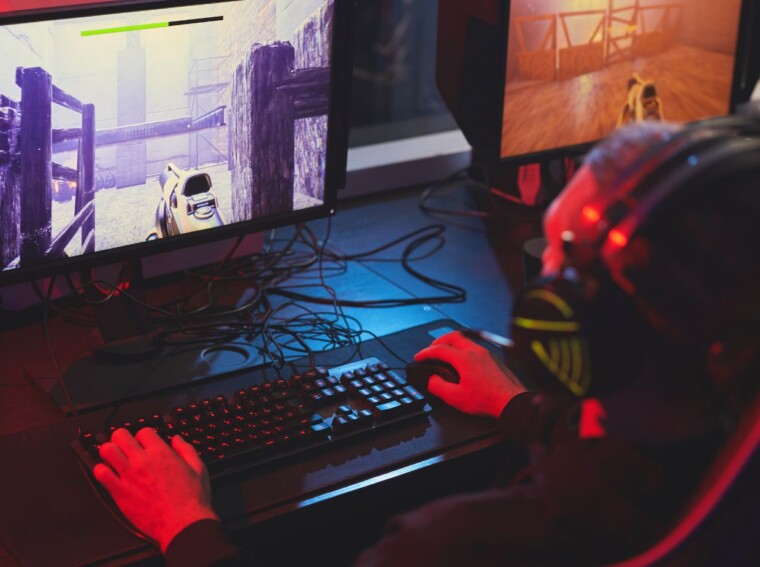Introduction: Understanding the Social Dynamics of Gaming
Often perceived as solitary activities, video games have evolved into vibrant social hubs where players from all walks of life interact, collaborate, and compete. This article delves into the multifaceted social aspect of video games, exploring how these digital platforms foster community, communication, and camaraderie.
The Online Arena: A Meeting Ground for Diverse Communities
The advent of online gaming has revolutionised the way players interact. Multiplayer games serve as virtual arenas where individuals from diverse backgrounds unite, transcending geographical and cultural barriers. This digital interaction not only enhances gameplay but also nurtures a sense of global community, allowing players to form lasting friendships and networks.
Collaboration And Teamwork: Learning to Work Together
Many video games require players to work in teams, promoting collaboration and teamwork. These cooperative environments teach valuable life skills such as communication, leadership, and problem-solving. Players learn to strategize together, allocating roles based on strengths and weaknesses, which mirrors real-world collaborative scenarios.
The essence of collaboration and teamwork in video games extends far beyond mere game mechanics. In multiplayer environments, players often find themselves in scenarios where success hinges on effective teamwork. This dynamic fosters a unique form of collaboration that is both fun and educational.
In team-based games, each player often has a specific role, akin to positions in a sports team. These roles, ranging from leadership positions like team captains to support roles, mirror real-life team dynamics. Players learn to identify and utilise each other’s strengths, a skill that is invaluable in both personal and professional settings.
Moreover, video games offer a safe space for practising conflict resolution and decision-making skills. In the heat of the game, disagreements may arise, and players must navigate these challenges diplomatically. This aspect of gaming teaches players to communicate effectively, negotiate, and reach consensus, all while maintaining the team’s spirit and focus on the common goal.
The diversity of players in online games also contributes to the richness of the teamwork experience. Players often find themselves collaborating with individuals from different cultures, age groups, and backgrounds, broadening their perspectives and fostering a deeper understanding of diversity and inclusion.
Additionally, many games incorporate complex strategies and problem-solving elements that require collective brainstorming and planning. Players engage in discussions, formulate strategies, and execute plans, developing critical thinking and analytical skills in the process.
Competitive Play: The Thrill of Ranked Gaming Sites
Competitive gaming, particularly on ranked gaming sites from Gambling.com, adds an exhilarating dimension to the social aspect of video games. These online platforms offer a unique space where gamers can engage in competitive play, honing their skills and rising through ranks. Ranked gaming sites cater to a wide array of games, from strategic board games to fast-paced shooters, and provide a structured environment where players are matched based on skill level.
This competitive landscape not only stimulates a drive for personal excellence but also fosters a vibrant community of like-minded individuals. Players on these ranked gaming sites often form teams or guilds, creating a sense of belonging and camaraderie. These communities become a hub for sharing strategies, celebrating victories, and supporting each other through defeats.
Moreover, ranked gaming sites contribute significantly to the e-sports phenomenon. They serve as breeding grounds for future professional gamers and teams, offering a platform for players to showcase their skills to a broader audience. The visibility and recognition gained on these sites can open doors to larger tournaments and sponsorships, making them a crucial step in the journey of a competitive gamer.

In-Game Communication: Beyond the Keyboard
The evolution of in-game communication tools has been pivotal in enhancing social interactions. Voice chat, text messaging, and emotes allow for a more immersive and expressive way of communicating. These tools enable players to share tactics, celebrate victories, and even engage in friendly banter, making the gaming experience more personal and engaging.
The Rise of Gaming Communities and Forums
Gaming communities and forums have emerged as essential platforms for players to discuss strategies, share experiences, and connect with like-minded individuals. These communities extend beyond the game, often spilling into social media, where discussions continue and friendships flourish. Such forums also act as support systems, where players seek advice and share their gaming achievements.
The Impact of Streaming and Spectatorship
Streaming and spectatorship in the realm of video games have revolutionised the way we engage with this medium, transforming it from a solitary activity into a shared, communal experience. The rise of platforms like Twitch and YouTube has not only made gaming more accessible to a wider audience but also added a new layer of social interaction and entertainment.
Streaming allows gamers to broadcast their gameplay live, providing a platform for them to showcase their skills, personality, and unique content. This has given rise to a new breed of internet celebrities: streamers who entertain and interact with their audience in real-time. The relationship between streamers and their viewers is symbiotic; viewers enjoy a diverse range of content and personalities, while streamers often rely on their audience’s feedback and support to refine their content and grow their channel.
Spectatorship in gaming has also led to the phenomenon of ‘Let’s Play’ videos and live streams, where viewers watch as others play games, often providing commentary and insights. This format has become incredibly popular, offering viewers a way to experience games they may not have access to or skills to play, and providing a platform for community-building around specific games or genres.

Furthermore, the social aspect of streaming is evident in the way viewers interact with each other and the streamer. Chat features on streaming platforms allow viewers to discuss the gameplay, share tips, ask questions, and even influence the course of the stream through viewer polls or interactive games. This creates a dynamic, interactive environment where viewers are active participants rather than passive spectators.
The impact of streaming extends to the esports industry as well. Live streaming of esports tournaments has brought competitive gaming to a global audience, with millions tuning in to watch professional gamers compete at the highest levels. This has not only elevated the profile of esports but also fostered a sense of community and belonging among fans of specific teams or games.
Lastly, streaming and spectatorship have educational benefits. Many viewers watch streams to learn about new games, improve their skills, or keep up with the latest trends in gaming. Streamers often provide tutorials, game reviews, and strategy guides, making their channels valuable resources for both novice and experienced gamers.
Conclusion: Video Games as Social Catalysts
In conclusion, the social aspect of video games is a testament to their power as digital platforms that bring people together. Far from being isolating, video games have become social catalysts, fostering connections, building communities, and teaching valuable interpersonal skills. As the gaming landscape continues to evolve, so too will the ways in which we interact within these virtual worlds.


